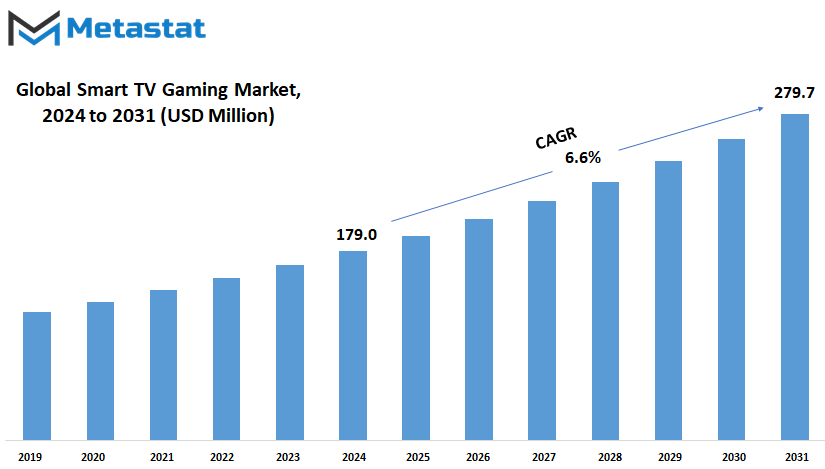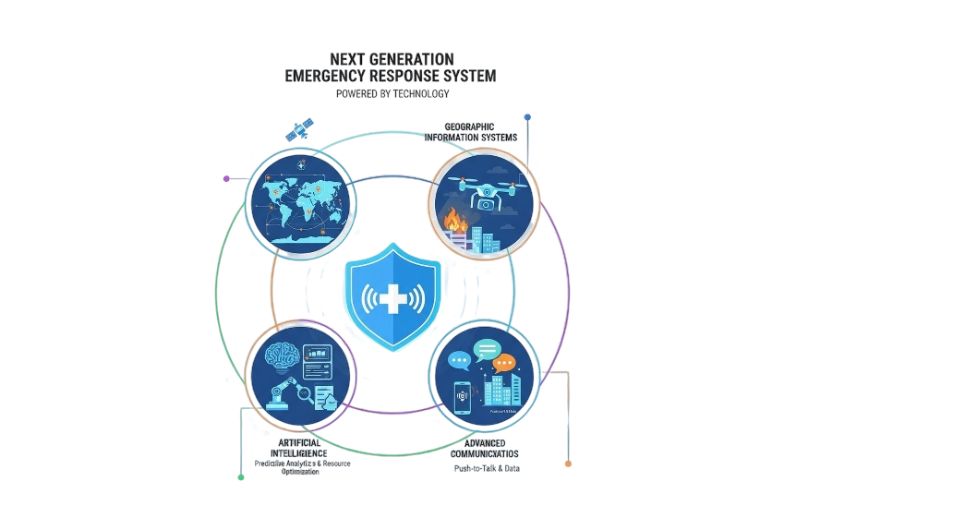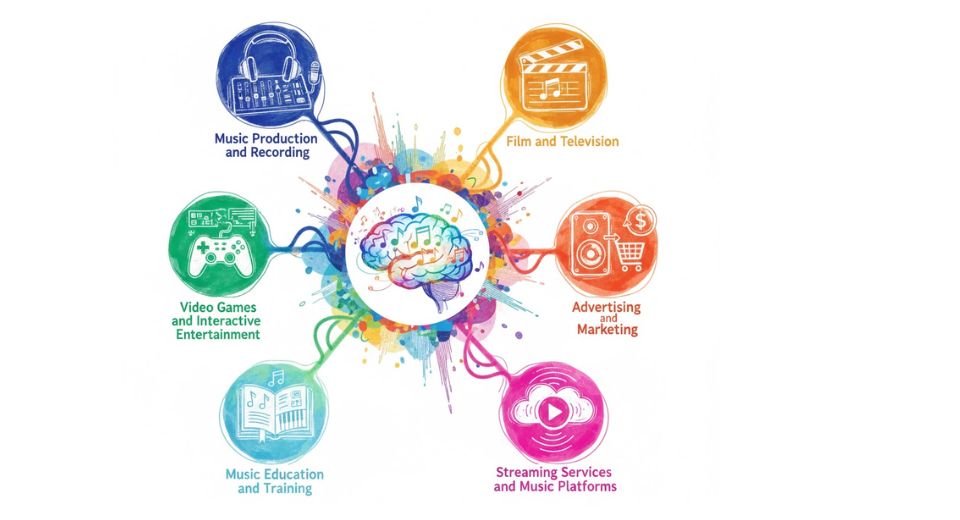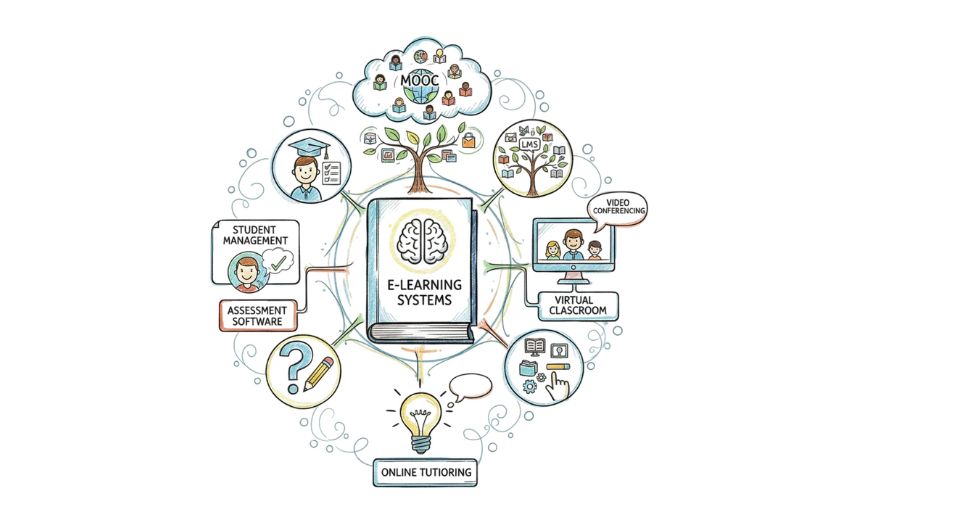MARKET OVERVIEW
This is yet an interesting aspect of the entertainment industry related to the Global Smart TV Gaming market, which has significantly evolved over recent years. The market focuses on smart televisions' integration of gaming capabilities, which changes what was basically a television set into a multi-function entertainment hub. Advanced operating systems and internet connectivity features in smart TVs also support an array of gaming applications and practically compares to traditional gaming consoles regarding graphics, gameplay, and user experience.
Advancements in this technological landscape will make smart TV gaming much sophisticated, as the industry bases its foundation on convergence, television, and gaming technologies. This way, users can directly get high-quality games through their TV sets, making additional hardware like gaming consoles or high-end PCs redundant. It makes the gaming experience accessible to a broader audience.
The progressive improvement in smart TV hardware and software capabilities would be the primary driving force for the Global Smart TV Gaming market. Modern smart TVs are equipped with strong processors, large storage capacities, and high-definition displays-all of which factor together to form a perfect scenario for gaming. Moreover, with the embedding of voice recognition and motion sensing technologies into smart TVs, the interactivity and immersion that accompany smart TV gaming have been amplified.
Smart TV gaming is taking an increasingly important place in the direction of development that gamers want: developers nowadays are considering setting up games specifically for smart TVs, made to be optimized for such larger screens and unique input methods. This is one reason why innovation is persuading the gaming industry to create a fresh wave. Large tech companies are aggressively entering the territory of smart TV gaming through their know-how in software and cloud service provision. Cloud gaming is going to pave the way for newness in the market because it allows stream-based games to be directly streamed to the smart TVs of users and not through physical media or download.
The subscription model is increasingly picking up in the Global Smart TV Gaming market too. Xbox Game Pass and PlayStation Now have surfaced with products providing access, in monthly subscriptions, to giant libraries of games. The benefits of this model lie in its ability to provide access to a variety of game titles in a cost-efficient manner for the gamer and continuously engage him or her with the platform.
Not to mention, not only casual gamers enjoy the smart TV gaming. Technological advancement and their progression allow more graphically complex and sophisticated games to be run on smart TVs in order to target even hardcore gamers. Expansion of 5G connectivity and better internet infrastructure across the globe will further help users in the seamless downloading and streaming of high-definition contents from the game thus enriching overall experience of gaming on smart TVs.
Consumer preferences are changing to accept devices offering multiple functionalities. Smart TVs which offer gaming capabilities fit well in this demand as entertainment systems, these days, are perceived to fulfill diverse needs of media consumption while being all-in-one solutions. This trend is likely to spread acceptance of smart TV gaming across various demographics and regions.
It is at the convergence of technological innovation with the need from the masses to combine entertainment solutions. Markets will grow substantially in the near term as smart TV technologies become more matured and with increasing developers' content optimized on the smart devices. Hybrid gaming-smart TV industry will continue to transform the entertainment game where consumers can enjoy seamless, immersive gaming from the comfort of the living room.
Global Smart TV Gaming market is estimated to reach $279.7 Million by 2031; growing at a CAGR of 6.6% from 2024 to 2031.

GROWTH FACTORS
The reason why the Smart TV Gaming market is expected to be a giant leap is the widespread adoption of advanced technologies and automation in various industries. Future prospects of this industry are matched with driving factors that accelerate the rapid development of this industry.
However, with the integration of Industry 4.0 and the Internet of Things (IoT), interconnected and intelligent manufacturing systems have finally been able to emerge. The smart factory further molds the conventional production process, mainly through the prevalence of sensors, data analytics, and machine learning capabilities, thus offering real-time monitoring, predictive maintenance, and the optimization of resource allocation to lead to higher efficiency, reduced downtime, and higher quality products.
Additionally, the emergence of additive manufacturing, or 3D printing, as it is popularly known, completely transformed the landscape in terms of designing and making products. The agility offered by additive manufacturing is nothing short of phenomenal because it allows for the manufacture of complex geometries and customized products without much waste. The capabilities and materials for 3D printing are constantly changing, and it will be ubiquitous in mainstream manufacturing as a means of on-demand production and mass customization.
The integration of manufacturing operations will require digital twins; virtual versions of physical assets or systems. With a virtual setting, manufacturers can simulate and test scenarios multiple times to identify issues and optimize their processes while continuing to improve time-to-market on newly created products. The benefits include faster iterations, lower costs, and quality control enhancements.
The main driver for automation, integration of artificial intelligence and machine learning algorithms into manufacturing systems, allows it to analyze the enormous amounts of data created in real time by connected devices, thus opening up predictive maintenance, process optimization, quality control, and many more, hence increasing productivity, precision, and safety for the workers in manufacturing facilities.
However, universal acceptance of Smart TV Gaming technologies would require heavy investment in infrastructures, human capacity building, and ensuring cybersecurity. While these are the solutions to the challenges, they will be what determines businesses embracing, in full, this change precipitated by the Smart TV Gaming revolution.
The Smart TV Gaming market will be witnessed to exhibit exceptional growth, and it will be fueled by the advanced technologies that converge with automation as well as data-driven insights. Unlocking new levels of efficiency, flexibility, and competitiveness, a market in which manufacturers embrace transformative technologies will be the one shaping the future of manufacturing globally.
MARKET SEGMENTATION
By Development Technology
The "Smart TV Gaming Market" can be one that will reveal unprecedented growth in the years to follow, on account of relentless pursuit of technological advancement, as the boundary between the physical and digital world blurs with time and makes way for never-before innovation in manufacturing processes.
More than anything else, it is the further development of technologies for development. JavaScript is an incredibly versatile programming language that will strive towards fulfilling dynamic and interactive interfaces for users and smoothly integrate human and intelligent systems in manufacturing. The version of the HTML5 markup language has altered the way data is represented and visualized/monitored so that its production lines can be intuitively controlled.
C/C++ -- the heritage programming languages that have proven themselves over time will remain essential for developing high-performance resource-efficient applications. These languages will power the backbone of any critical systems and therefore will ensure precision, reliability, and real-time responsiveness in mission-critical manufacturing operations.
However, a key strength of Smart TV Gaming will be in how such technologies blend with newer paradigms. Cutting-edge solutions like machine learning, artificial intelligence, and Internet of Things (IoT) will come into effective play with the current frameworks for product development, leading to unprecedented spikes in automation, predictive maintenance, and supply chain optimization.
Imagine smart robots working alongside human employees: these can work alongside the humans and be using real-time analytics to dynamically optimize production schedules and minimize waste. The predictive algorithms predict which equipment failures are almost certain to occur so that proper preparation and maintenance may minimize unwanted downtime, maximizing operational efficiency. That's the future offered by Smart TV Gaming, one in which technological advancement and human ingenuity will eventually make it a sustainable, efficient, and competitive manufacturing ecosystem.
By End User
Smart TV Gaming is constantly changing due to the advancement of technology and changes in the market. In fact, it is revolutionizing the designing, manufacturing, and delivering processes of products to its consumers throughout the world. This essay explores the global Smart TV Gaming market and draws attention towards adult and children's end-user segments.
Adults constitute one of the end-users categories where Smart TV Gaming has paved the way to personalized and customized products. With this change, consumers can now co-create their product, thus customizing to their specific needs and preferences in ways previously impossible. This has, therefore, gained wide spread momentum across almost every industry: from fashion to consumer electronics, automotive, and healthcare. Small batch sizes-and, eventually, single-unit orders-through the application of digital technologies such as 3D printing, augmented reality, or advanced simulation software can be produced by manufacturers. Through Smart TV Gaming, supply chains have been streamlined and therefore production processes improved to achieve cost savings as well as better efficiency. Manufacturers can now monitor and make in-line adjustments to their production lines in real time with the consequence of least waste and downtime. Predictive maintenance and remote monitoring capabilities also helped improve asset utilization and reduced operational costs.
Smart TV Gaming has presented new opportunities in the children's segment through educational and interactive products. Manufacturers are bringing digital elements into toys and learning materials to make them more engaging and creative for young minds. Customized toys, and study-related instruments, tailored for diverse learning styles and preferences, have become mainstream, enabling educators to achieve personalized learning.
For example, Smart TV Gaming encourages specialized production for children with special needs or disabilities. Given its ability to produce accurate and customized assistive devices and adaptive equipment, the incidence of further inaccessibility and exclusion will be reduced as more access is provided.
By OS Type
The Smart TV Gaming landscape has witnessed tremendous improvements that propel industries to greater efficiency and innovations. Its rapid development in technology made the introduction of digital solutions in manufacturing processes play a pivotal role in how products are designed, produced, and delivered.
In the operating system, the Smart TV Gaming market shows diversity within the options with specific needs and preferences. On the other hand, Android TV has remained to be the friendlier interface, supported by a wide array of applications that can be used in any digital solution. Thus, its foundation is well-built for manufacturers. Though not the epitome of reliability, Tizen OS puts much importance on safety features, hence it is used in more specialized manufacturing environments where data integrity and smooth running would take precedence over everything else.
FireTV has also found its position in the manufacturing industry as offering easy-to-use interfaces and blending perfectly with other systems in operation. There are also many operating systems based on different strengths and functionalities available to suit the needs of various worldwide requirements.
The future Smart TV Gaming marketplace will continue adapting and embracing cutting-edge technology; and advanced analytics, machine learning, and artificial intelligence will further hone the manufacturing process in order to optimize in real time, reduce maintenance requirements based on prediction, and improve the quality of the final product. Moreover, Internet of Things devices and sensors will seamlessly exchange data and provide unprecedented visibility into operations and enable informed decisions.
Efficiency and productivity will be in addition to achieving the benefits brought about by this Smart TV Gaming solution. Its implementation will also add sustainability value. As manufacturers can make optimal use of resources available, reduce waste, and minimize footprint on the environment through digital tools, it adds a touch of sustainability efforts to the world.
In addition, the Smart TV Gaming market will significantly promote cooperation and integration of supply chains. Coordinated data sharing, connected systems without media breaks, and interconnecting of processes between manufacturers, suppliers, partners, and customers will provide clear, fast, and highly responsive solutions.
|
Report Coverage |
Details |
|
Forecast Period |
2024-2031 |
|
Market Size in 2024 |
$179.0 million |
|
Market Size by 2031 |
$279.7 Million |
|
Growth Rate from 2024 to 2031 |
6.6% |
|
Base Year |
2022 |
|
Regions Covered |
North America, Europe, Asia-Pacific Green, South America, Middle East & Africa |
REGIONAL ANALYSIS
The global Smart TV Gaming market is changing very fast because of continuous innovation in the science and technology aspect of producing things and the urgent need for effective sustainable processes of production. Long-term outlook: The regional trend influencing this increasingly dynamic industry is the following.
In the region of North America, Smart TV Gaming is picked up in the heat of the region's commitment to innovation and technological leadership. The two manufacturing hubs of this region-the United States and Canada-have taken up digital technologies with open arms for optimization of operations, quality of product, and a better times-to-market. Advanced analytics, automation, and IoT solutions are bringing about change in the century-old traditions of manufacturing; they are in real-time monitoring, predictive maintenance, and optimization of resource utilization.
Europe is heavily funding Smart TV Gaming initiatives; it builds on its core industrial heritage, for example, Germany, France, and the UK invest greatly in venture capital in cutting-edge technologies like additive manufacturing, or 3D printing, and robotics and virtual reality simulation. This all bears the impacts wherein manufacturers will be able to create designs that can otherwise only be thought about or made in several iterations- thus saving waste-thereby doing it with more efficiency in production. But the sustainability and circular economy pursued in this region further push the adoption of digital solutions that, as much as possible, impose minimal environmental impact. The Asia-Pacific region will come as a super force in the realm of Smart TV Gaming. This is, above all, due to fast industrialization and economic growth, making these countries like China, Japan, and South Korea focus on increased manufacturing competitiveness, which again contributes to raising the quality of products demanded by today's markets. While traditional manufacturing processes turn into agile and responsive ones with the spread of smart factories based on advanced automation and data-driven decision-making, new forms of excellence and growth continue to be found.
Other South American countries, like Brazil and Argentina, begin realizing that Smart TV Gaming can serve as a good opportunity in improving their industrial sectors. New efforts will be aimed at attracting investment, forming public-private partnerships, and creating a proper workforce with the ability to work within digitalized manufacturing environments. Natural resources abound, and a developing domestic market challenges efficient use of available resources and rapidly evolving consumer demands are forcing the adoption of digital solutions.
Investment is being made at an enormous scale in the diversification of competitive manufacturing capabilities, such as in the United Arab Emirates and Saudi Arabia. Productivity and cost decline are achieved through digital technologies, and innovation products are being developed for local and global markets. Moreover, in the region, there would be a focus on sustainable development, which is leading the way towards digital solutions that have less environmental impact and efficient use of resources. Thus, global trends in the Smart TV Gaming market will follow regional drivers to change the way the industries work, collaborate, and innovate. Through embracing these digital technologies, manufacturers all around the world can open up fresh opportunities while enhancing competitiveness and contributing towards a more sustainable and efficient future.

COMPETITIVE PLAYERS
In modern manufacturing, the digital revolution speaks to a new age of unwonted transformation. The Smart TV Gaming market in the Global scenario draws on the fruits of this revolution through diverse forms of competitive vendors, which is pushing at the boundaries of innovation. Such visionaries wield the power of such leading-edge technologies to revolutionize how products are designed, produced, or even delivered.
While imagining tomorrow, it isn't difficult to conjure visions of the integration of so many physical and digital worlds in incredibly fluid ways. Industry majors like Siemens AG, TATA Consultancy Services Limited, Dassault Systèmes, Autodesk Inc., SAP SE, and PTC Inc. are driving the paradigm shift forward. These visionaries are working with slick combinations of cutting-edge software solutions and leveraging the power of cloud computing and complex data analytics to achieve unprecedented levels of manufacturing process streamlining.
Imagine factories where clever machines perfectly collaborate with human operators to optimize the production cycles of their products and avoid any waste at all. Perhaps engineering and design engineers could co-create designs with virtual models in virtual reality, effectively iterating on designs before making a single physical prototype. One might imagine supply chains reasonably integrated such that the tracking of an item could be done in real time as it moves from one distribution center to another, or from one store to another, based on real-time shifts in market demand.
It is a future occurring rapidly, this-this is not some fanciful dream of the distant future. Companies like Cogiscan, Mitsubishi Electric Automation, Inc., Fujitsu Limited, and Metal Worm are creating disruptive technologies that have a lead over bringing about the revolution in the scope of what is now possible in manufacturing. From advanced robotics and automation systems to additive manufacturing, more popularly known as 3D printing and augmented reality applications, these companies are transforming.
This revolution is far more than the advancement of technology. Instead, it is a mind-set change that introduces collaboration, agility, and continuous improvement into the very fabric of Smart TV Gaming operations. Businesses embracing this paradigm will be ready to seize the enormous opportunities awaiting them in the delivery of products with unprecedented velocity, precision, and quality.
Standing at the doorstep of this Smart TV Gaming revolution, competition is becoming abuzz with innovative players. Changing the rules of the game, their relentless pursuit of excellence and a firm commitment toward pushing the envelope will definitely be an assertive and significant mold for the future of manufacturing into unprecedented efficiency and sustainability and unparalleled satisfaction of customers.
Smart TV Gaming Market Key Segments:
By Development Technology
- JavaScript
- HTML5
- C/C++
- Others
By End User
- Adult
- Children
By OS Type
- Android TV
- Tizen OS
- FireTV
- Others
Key Global Smart TV Gaming Industry Players
- Electronic Arts Inc.
- Vector Unit
- Gameloft SE
- Hipster Whale
- Deca Live Operations GmbH
- HypeHype Inc.
- FDG Entertainment GmbH & Co. KG
- Ubisoft Entertainment
- ZeptoLab
- Hyperkani
- Raw Fury
- Refuel Games Pty Ltd
- Concrete Software Inc.
- Zen Studios Ltd.
- Hexage s.r.o.
WHAT REPORT PROVIDES
- Full in-depth analysis of the parent Industry
- Important changes in market and its dynamics
- Segmentation details of the market
- Former, on-going, and projected market analysis in terms of volume and value
- Assessment of niche industry developments
- Market share analysis
- Key strategies of major players
- Emerging segments and regional growth potential








 US: +1 3023308252
US: +1 3023308252






